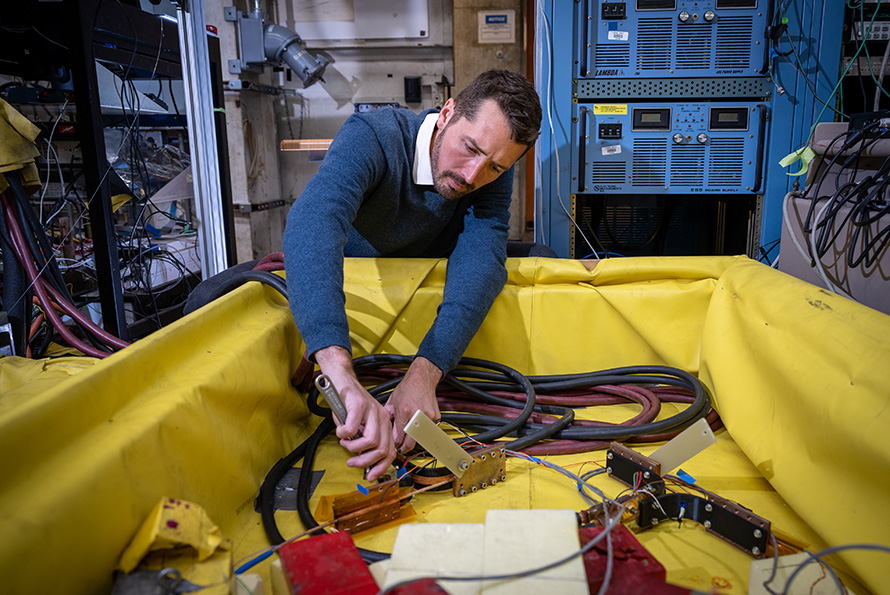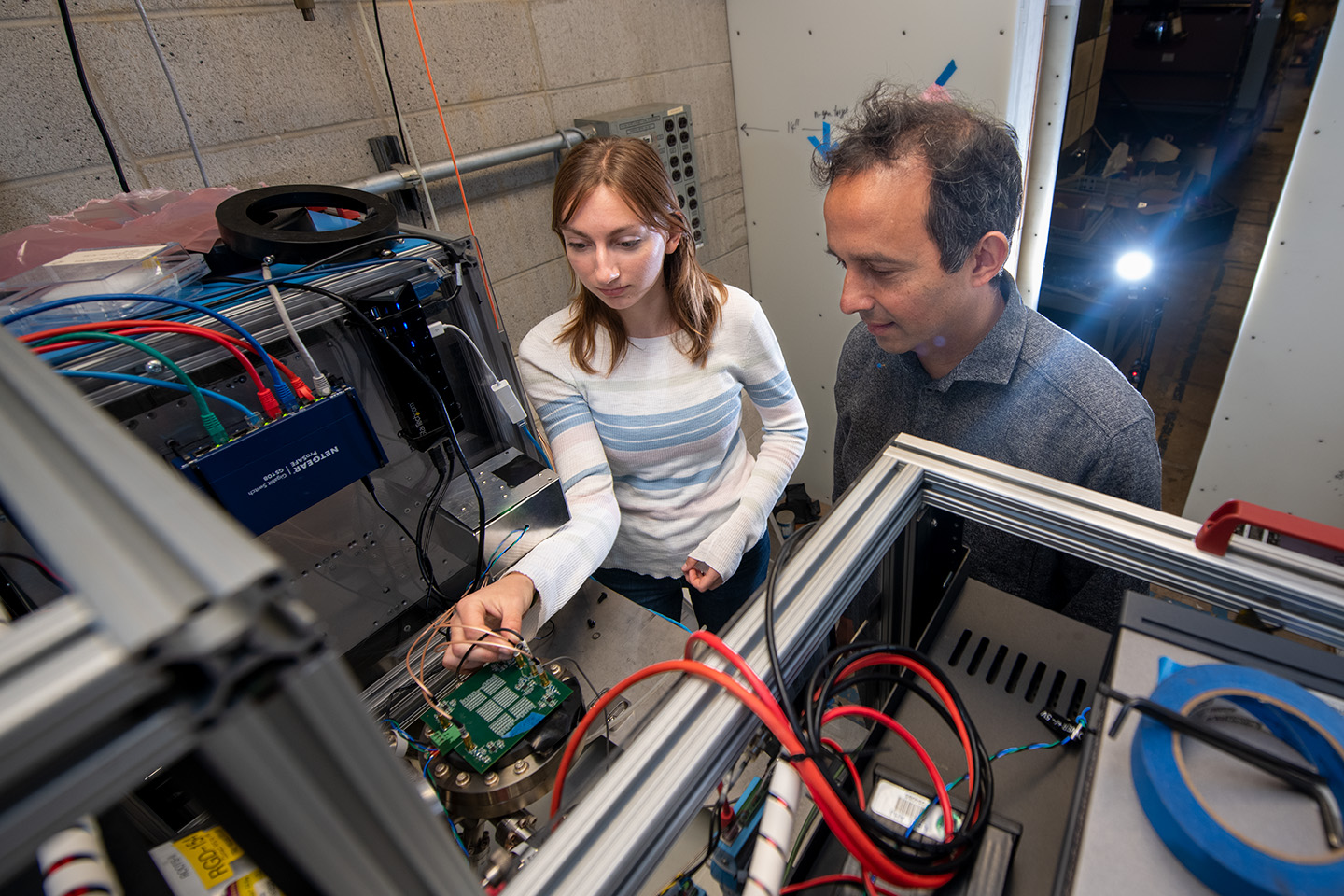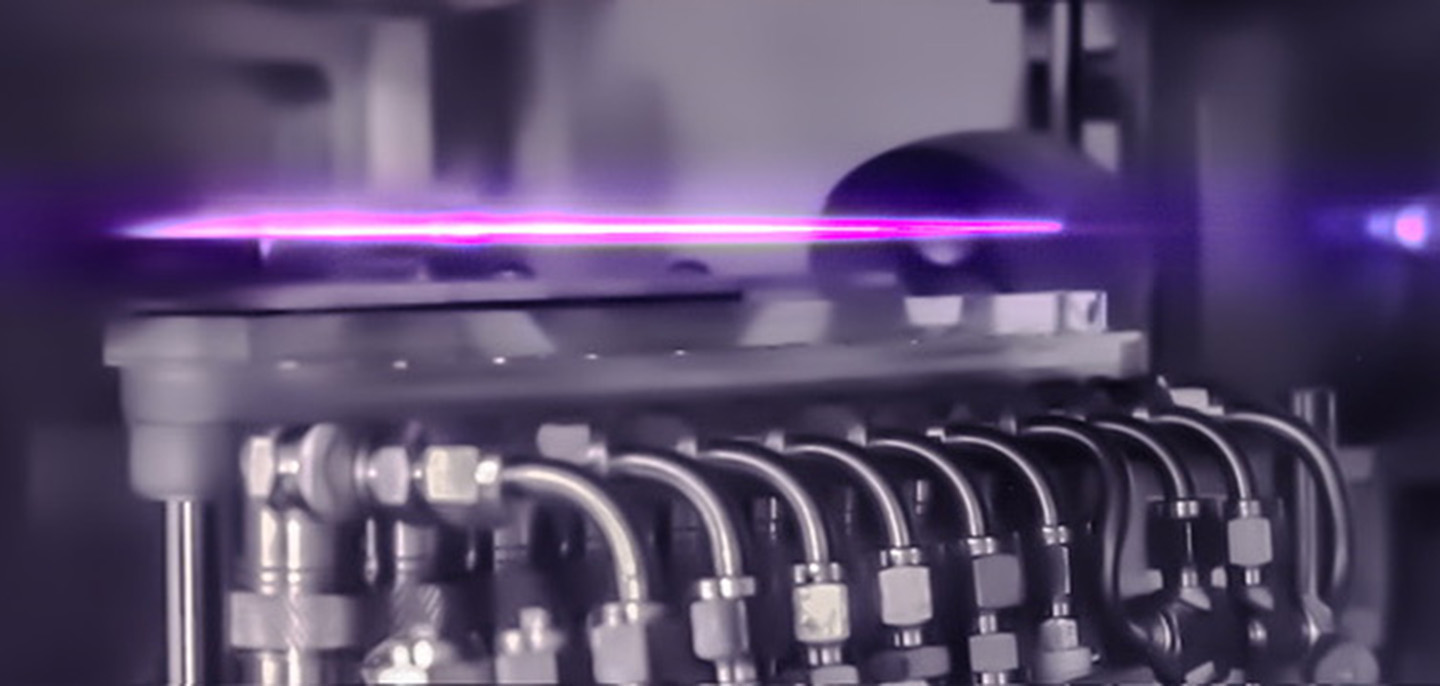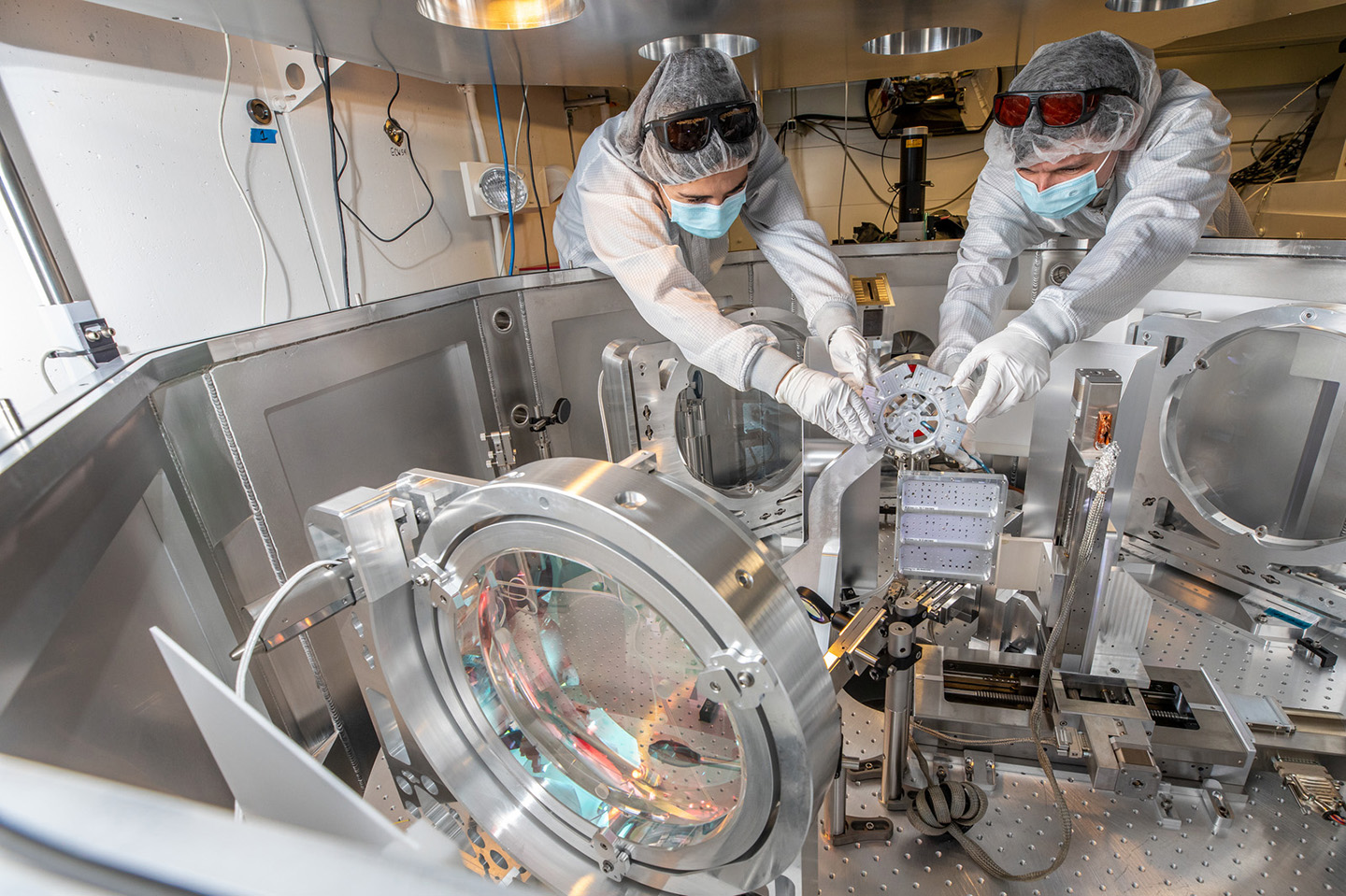Fusion, the process powering our sun, has the potential to provide a virtually limitless supply of energy. But harnessing it on Earth requires researchers to overcome some of the most complex challenges in physics and engineering.
Here are six ways experts at the Department of Energy's Lawrence Berkeley National Laboratory (Berkeley Lab) are driving innovations in both technology and theory to make this abundant source of power a reality:
Better Magnets Built for Fusion
In magnetic fusion, hot matter is confined by powerful magnetic fields. That technique needs new, high-temperature superconducting magnets that can operate efficiently and reliably. Berkeley Lab scientists are developing novel concepts for magnets (and ways to improve their performance) as part of the lab's Superconducting Magnet Program. They also partner with industry to transfer the lab's magnet expertise. That knowledge covers everything from the ground up: modeling how high-temperature superconductors behave, designing and winding superconducting cables into magnets, optimizing magnet connections and cooling, and keeping magnets running smoothly. Berkeley Lab also leads the U.S. Magnet Development Program, which pushes the limits of superconducting magnet technology for accelerators in high-energy physics; technical advances in that field often find crossovers and benefit fusion (and vice versa).


Preventing Magnet Meltdowns with Real-Time Monitoring
Superconducting magnets - even the high-temperature ones - operate at very cold temperatures to conduct electricity with almost no resistance. Making sure the magnets stay in that superconducting state will be crucial to protect equipment and maintain stable fusion reactions. Berkeley Lab scientists are building more ways to monitor magnets in detail and in real time, making it so they can predict and prevent issues before they occur. One new approach pioneered at the lab uses a network of tiny fiber-optic sensors to capture small changes in heat or strain in the magnet material. Researchers are also developing machine learning algorithms that can provide real-time system monitoring.
Cameron Geddes, director of the Accelerator Technology & Applied Physics (ATAP) Division at Berkeley Lab, shares how the lab works on essential components to advance fusion energy research.
Cracking Plasma Physics with Supercharged Simulations
Plasma is the fourth state of matter and the heart of the fusion process. Understanding how this hot soup of particles behaves is crucial, but direct observation is nearly impossible. Instead, much like using a digital wind tunnel to design a more aerodynamic plane, researchers turn to simulations to design successful and efficient fusion systems.
Experts at Berkeley Lab have developed advanced codes - such as WarpX, which won one of the highest honors in supercomputing, the Gordon Bell Prize - and innovative computational techniques that enable faster, more precise, and more cost-effective modeling of fusion. Many of those simulations run on systems at the National Energy Research Scientific Computing Center (NERSC), and the data is shared with other facilities through the high-performance Energy Sciences Network (ESnet), both managed by Berkeley Lab. Researchers running local and remote fusion experiments can also connect to NERSC systems through ESnet, an example of Integrated Research Infrastructure. Scientists can use that computing power to build virtual models known as "digital twins," which use real experimental data to simulate and predict what happens next.

Understanding Neutrons to Advance Fusion Designs
Designing fusion systems depends on a deep understanding of how atoms interact, especially under extreme conditions. Researchers use the high-intensity fast neutron source at the 88-Inch Cyclotron and a 14-million-electronvolt (MeV) neutron generator in the Fusion Science & Ion Beam Technology Program to investigate neutron reactions in detail. This crucial information improves databases (such as the Evaluated Nuclear Data File) that feed into models, simulations, and system design. The experiments also provide valuable training data for machine learning tools that speed up research.

Compact Accelerators for Fusion Diagnostics and Ignition
In inertial fusion, a fuel pellet is heated to ignition with a blast of energy from a gigantic laser system. In the future, a compact, high-energy system could trigger fusion more efficiently. One potential method is fast ignition using a beam of high-energy protons. At the Berkeley Lab Laser Accelerator Center (BELLA), researchers are exploring this approach at a reduced scale using laser-plasma accelerators (LPAs): an emerging technology that is capable of boosting particles to high speeds over extremely short distances. Experts have also designed and built cutting-edge LPAs to accelerate electrons and ions, leveraging technology developed for high-energy particle physics to study fusion targets and how they behave over time.

Putting Fusion Pieces Through Their Paces
Fusion ignition facilities use a tremendous amount of energy and typically fire in the range of once a day, making them impractical for testing all the components a fusion machine needs. Berkeley Lab helps bridge that gap with faster, more affordable experiments.
The BELLA petawatt laser, firing about once per second, is open to researchers via the LaserNetUS program to perform high-precision experiments and develop diagnostics. Meanwhile, the 88-Inch Cyclotron provides an intense neutron beam to study how materials hold up under extreme conditions. Researchers have already used the facility to damage test a high-temperature superconducting magnet tape known as ReBCO (rare-earth barium copper oxide). And the lab's Advanced Light Source and High Repetition-rate Electron Scattering setup can capture snapshots of how materials change - and defects form - at the atomic level in less than a trillionth of a second, providing key information for designing components that can better withstand radiation.

Learn more about how Berkeley Lab is leading research in fusion energy science.






